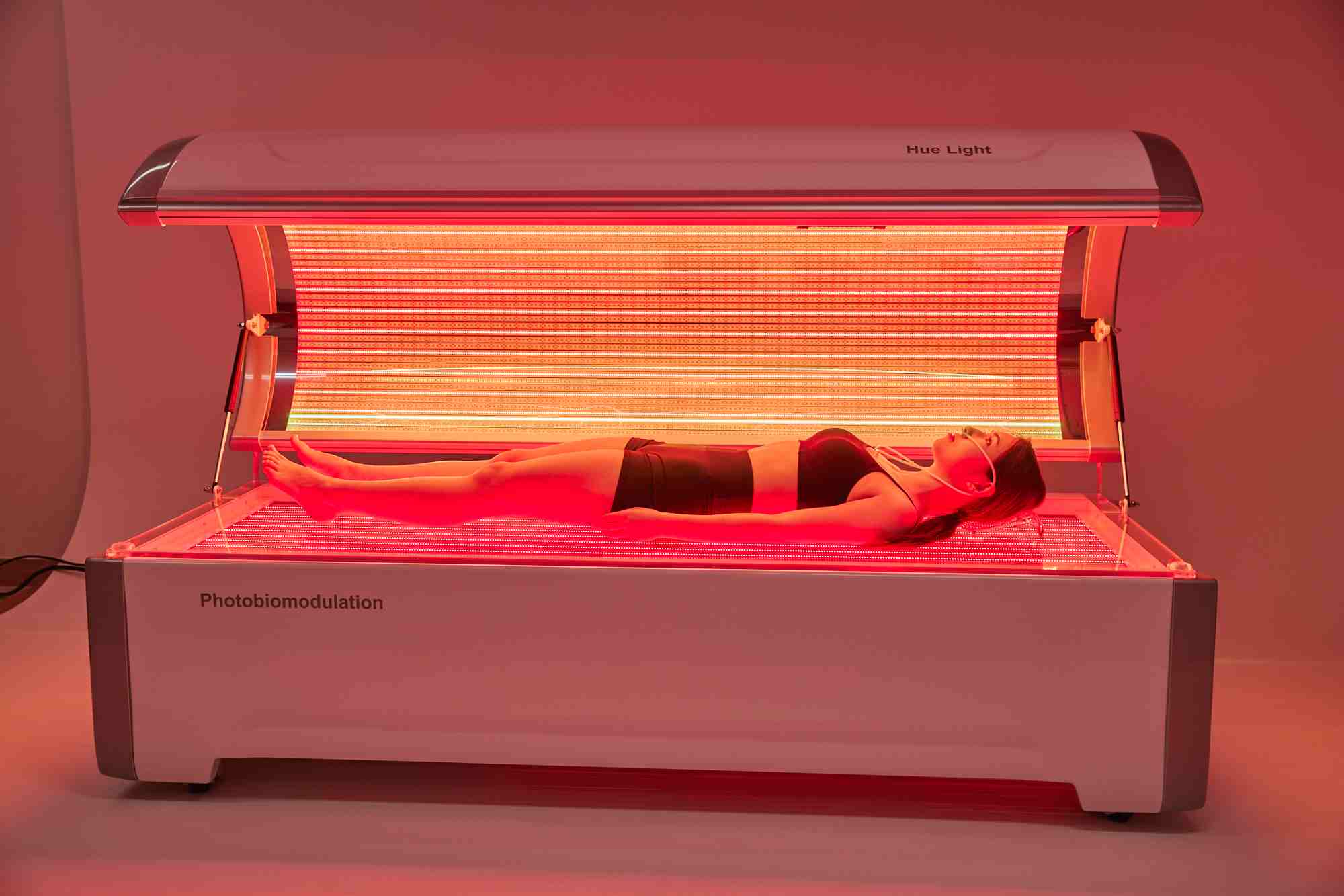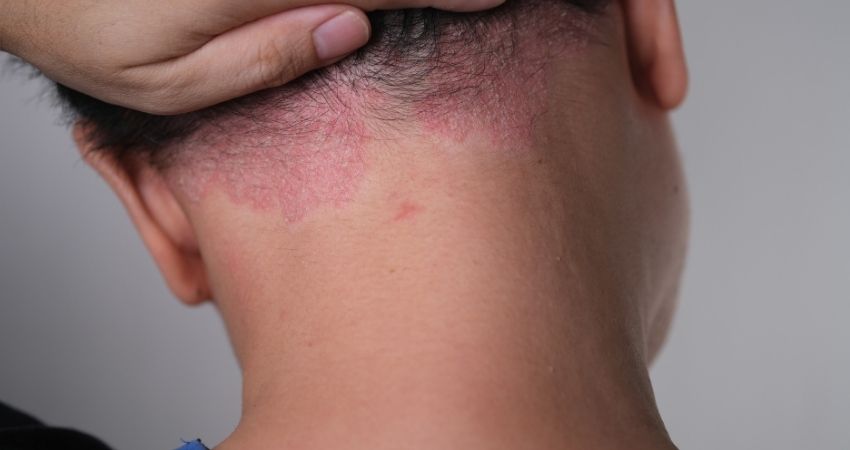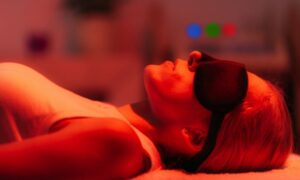Psoriasis is more than just a skin condition. It’s an autoimmune disorder that can cause discomfort, pain, and self-consciousness. While there’s no cure, many people are exploring new options to manage flare-ups. One treatment getting attention is red light therapy for psoriasis.
But does it actually work? How is it different from medical phototherapy? And most importantly, how should you use red light therapy for psoriasis to see results?
This guide covers everything you need to know: how it works, benefits, limitations, risks, and expert insights, so you can decide if it’s right for you.
What Is Psoriasis?

Psoriasis is a chronic autoimmune disease that speeds up the life cycle of skin cells. Instead of the usual 28–30 days, skin cells in people with psoriasis regenerate in just 3–7 days. This rapid turnover causes red, inflamed patches covered with silvery scales, often referred to as plaques.
Common areas affected include:
- Elbows and knees
- Scalp
- Lower back
- Hands and feet
- Nails (thickening, pitting, or discoloration)
Psoriasis symptoms vary from mild patches to widespread flare-ups that can disrupt daily life. Beyond the physical discomfort of itching, burning, and cracking, psoriasis can affect mental health, confidence, and social interactions.
While there’s no cure, treatments focus on reducing inflammation, slowing cell turnover, and managing triggers.
What Is Red Light Therapy?
Red light therapy (RLT), also called low-level laser therapy (LLLT) or photobiomodulation, is a non-invasive treatment that uses red and near-infrared wavelengths of light to stimulate cellular repair and reduce inflammation.
Unlike ultraviolet (UV) phototherapy used in dermatology, red light does not contain UV rays, so it doesn’t burn or damage the skin. Instead, it penetrates deeper layers to boost cellular energy.
A Quick History
- 1990s: NASA first studied red and near-infrared light to help astronauts heal wounds and grow plants in space.
- 2000s onward: Clinical research on red light therapy for skin conditions expanded into psoriasis, joint pain, wound healing, and inflammation.
- Today, Red light therapy is available in dermatology clinics, wellness spas, and at-home devices.
Is Red Light Therapy Good for Psoriasis?
 This is the big question: Can red light therapy really help with psoriasis, or is it just hype?
This is the big question: Can red light therapy really help with psoriasis, or is it just hype?
What Research Says
- A 2011 study in the Journal of the European Academy of Dermatology and Venereology found both red and blue light therapy reduced psoriasis plaques when used with salicylic acid. Red light was particularly effective in improving scaling and thickening of the skin.
- A clinical study on red light therapy for psoriasis published on PubMed also showed that patients with plaque psoriasis achieved 60%–100% clearance after two red light therapy sessions per week for a month.
- Anecdotal evidence and small trials suggest red light therapy reduces inflammation, itching, and redness, providing symptomatic relief for many patients.
Why It Helps
Red light therapy works by:
- Reducing inflammation: Calms overactive immune responses.
- Normalizing skin cell growth: Helps regulate the abnormal cell turnover in psoriasis.
- Boosting healing: Increases blood flow and oxygen supply to affected areas.
- Relieving discomfort: Many users report reduced itching and burning.
Limitations
- Results vary; some people notice improvements, while others see little change.
- Studies are promising but still limited in size and scope.
- It’s not a cure, but it may work well as part of a comprehensive psoriasis management plan.
How to Use Red Light Therapy for Psoriasis
If you’re considering this treatment, knowing how to use red light therapy for psoriasis is crucial for results.
At a Dermatology Clinic
- Sessions are typically 2–3 times per week.
- Medical-grade devices deliver controlled wavelengths and intensities.
- Can be combined with topical treatments like corticosteroids or salicylic acid
At-Home Devices
- Options range from handheld wands to full-body PBM devices.
- Always choose an FDA-cleared device to ensure safety.
- Follow the manufacturer’s instructions carefully for distance, duration, and frequency.
How Often Should You Do Red Light Therapy for Psoriasis?
- Research suggests 2–3 sessions per week for 4–6 weeks can produce visible improvements.
- Consistency matters; occasional sessions are unlikely to help.
- Maintenance treatments may be needed to keep symptoms under control.
Comparing Red Light Therapy vs. UV Light Therapy
It’s important to clarify: red light therapy is not the same as medical UV phototherapy used in dermatology.
| Feature | Red Light Therapy | UVB/PUVA Phototherapy |
| Light Type | Red/Near-Infrared | Ultraviolet (UV) |
| FDA-Approved for Psoriasis | No | Yes |
| Risk of Skin Cancer | No | Yes (with prolonged exposure) |
| Pain/Heat | No | cause mild burning or tanning |
| Mechanism | Reduces inflammation, boosts repair | Slows cell turnover, suppresses immune response |
Bottom line: UV therapy is the gold standard for psoriasis, but red light therapy is a gentler, drug-free option some patients explore alongside traditional care.
Benefits of Red Light Therapy for Psoriasis
People trying red light therapy for psoriasis often report the following benefits:
- Reduced redness and scaling – Helps calm inflamed plaques and smooth rough skin.
- Less itching and discomfort – Ease the irritation and pain associated with flare-ups.
- Smoother skin texture – Improves overall appearance and feel of affected areas.
- Improved confidence and quality of life – Managing visible symptoms can boost self-esteem.
Additional Advantages
- Non-invasive and painless – No needles or surgery required.
- No downtime – You can resume daily activities immediately after treatment.
- Home use is possible – Some devices, like the whole body PBM Wing Panel, PBM Treatment device, allow convenient self-treatment.
- Potential skin benefits – may help improve skin tone, reduce fine lines or wrinkles, and support minor wound healing.
Risks and Side Effects of Red Light Therapy for Psoriasis
Red light therapy is generally considered one of the safest light-based treatments for skin conditions.
Potential side effects include:
- Mild skin redness
- Temporary dryness
- Eye strain (if not wearing protective goggles)
Precautions:
- Avoid if you’re on photosensitizing medications (some antibiotics, antidepressants, or acne treatments).
- Always use eye protection during treatment.
- Check with your doctor if you have sensitive skin or other autoimmune conditions.
Alternatives to Red Light Therapy
If you’re not sure about RLT, other psoriasis light therapies and treatments include:
- UVB Phototherapy (the most common medical treatment)
- PUVA Therapy (psoralen drug + UVA light)
- Excimer Laser (targets small areas with UVB light)
- Topical Treatments (corticosteroids, vitamin D analogues)
- Systemic Medications (methotrexate, cyclosporine, biologics)
Red light therapy is best seen as a complementary option, not a replacement.
Lifestyle Tips to Support Psoriasis Treatment
Alongside red light therapy or medical treatments, lifestyle choices can make a big difference:
- Moisturize daily with fragrance-free creams.
- Avoid triggers like stress, alcohol, and smoking.
- Eat anti-inflammatory foods (omega-3s, leafy greens, berries).
- Stay hydrated to reduce dryness.
- Manage stress with meditation, yoga, or breathing exercises.
- Get enough sleep to support immune balance.
When to See a Dermatologist
Before starting any new therapy, especially if you’re considering at-home devices, consult a dermatologist. They can:
- Confirm if red light therapy is appropriate for your psoriasis type.
- Recommend how often you should use it.
- Suggest combining it with other proven treatments.
- Monitor progress and adjust your treatment plan.
Final Thoughts
Living with psoriasis can be challenging, but you don’t have to face flare-ups without options.
Red light therapy for psoriasis can help reduce plaque visibility, ease itching, and support your skin’s natural healing process. For some, results are noticeable; for others, they may be mild or temporary. The key is consistency, realistic expectations, and guidance from a healthcare professional.
If you’re considering red light therapy, Hue Light offers high-quality at-home devices that deliver reliable therapeutic exposure to affected areas, making it easier to incorporate into your personalized treatment plan alongside proven therapies and lifestyle adjustments.
Ultimately, the best approach is the one that works for your skin, your body, and your lifestyle.












